#rice museum of rocks & minerals
Video
Rice Museum, Oregon ✨ January 2020
Etsy | Instagram
4 notes
·
View notes
Photo
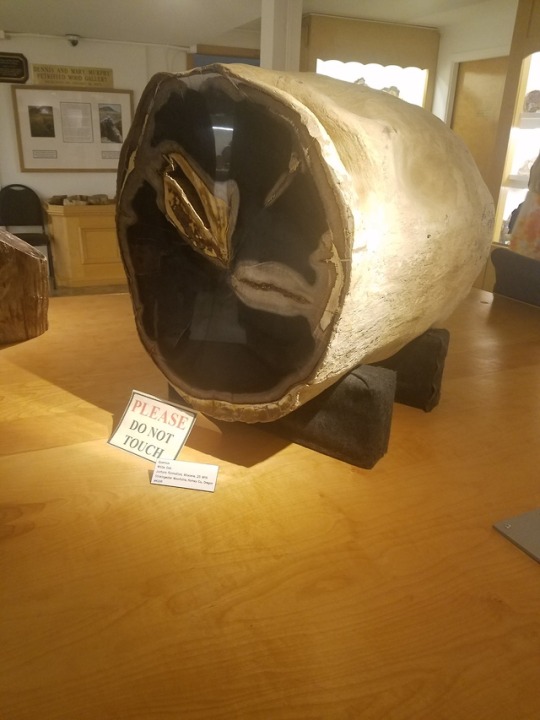

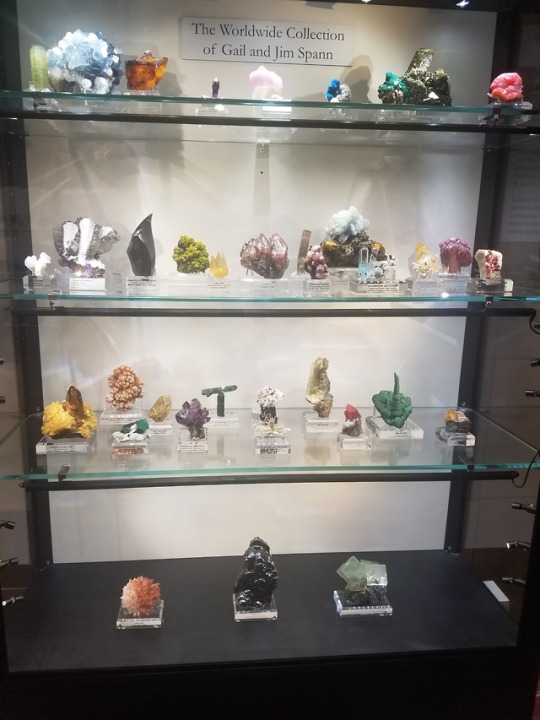

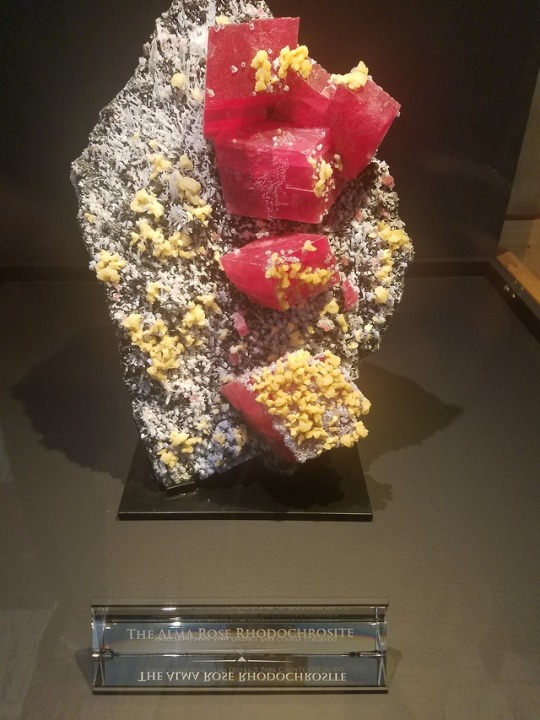
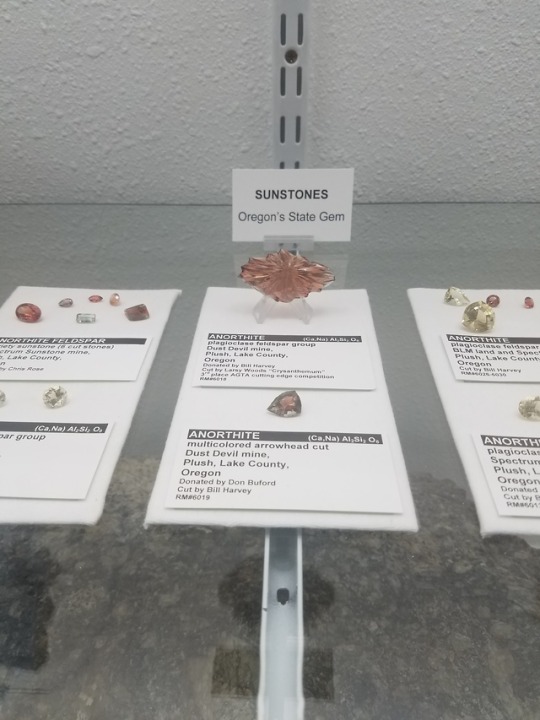


Pictures from a recent school trip to the Rice Museum of Rocks and Minerals, Part 2.
#trilobiter#photography#oregon#science#geology#paleontology#things of beauty#never not awesome#rice museum of rocks and minerals#teaching#education
15 notes
·
View notes
Text
Gondwana presents the overlapping narratives of antiquity. A densely forested region in central India, it was named after the Gonds living there [...]. In these dense forests British geologists believed they had found the oldest rock systems of India. These [...] forests and rocks became the foundation for theories of the existence of a prehistoric southern supercontinent. The Austrian geologist Eduard Suess named it Gondwanaland after this region.
The imagined supercontinent has led to real landscapes.
---
There is a game reserve called Gondwana in South Africa and a rainforest by the same name in Australia, both having derived their identity from the ancient geological land mass.
In addition, [...] its geological denominations have lent it racial and cultural significance and the term Gondwana is used to describe Afro-Asian cultures. [...] [P]rimitivism was essential to nineteenth-century colonialism, in which the conquest of landscapes also entailed the conquest of their deep past. [...] Similar confluences of geology and anthropology reframed the history of Australia from the ‘last of lands’ to a primitive landscape. The Karoo region of South Africa was similarly endowed with geological and ethnological primitivism. [...] [Colonial anthropologists] studied the aboriginal races as a geologist studied fossils, as remains of an extinct world. [...]
---
So what did the geologist see? [...] Simultaneously, coal, a key component of British imperialism and industrialization, was found in the region. In addition, the region had the rich black soil known locally as regur, which was vital for growing cotton, another critical component of nineteenth-century British industrial revolution and imperialism. [...] [A]nd it is here that the narratives of landscape and ethnology became intertwined. [...]
Explorers often performed several roles simultaneously in Gondwana: those of ethnologist, missionary, colonial administrator and mineral prospector. [...] Here, deep inside this coal mine, we begin to understand why geology, ethnology and history were so entangled in Gondwana. [...] It was an outcome of the conjoined studies of ‘man and nature’ which the British undertook in India. The search [...] crossed the sanctified disciplinary boundaries of anthropology, archaeology and geology here. It was in their search for the other India in the middle of the nineteenth century, during the so-called ‘mutiny’, [...] in the search for an India that was not [...] mutinous - an untainted, wild yet passive India - that British explorers searched for and found their Gondwana.
---
This is a history of the colonization of a landscape, its deep past, myths and resources. [...]
[T]he British residents of Nagpur met in the Central Museum of the city to form the Antiquarian and Scientific Society of the Central Provinces [...]. A year later, in 1865, a massive exhibition was held in the ramparts of Sitabaldi fort where the British rulers of the Central Provinces displayed their colonial possessions to the natives. People came in large numbers [...]. Coal was the most important product on display at the exhibition, along with livestock, rice and wheat. The British also displayed the cotton gin, sugar crushers and other industrial tools that transformed the natural resources of Gondwana into industrial commodities.
In this intersection [...] lies the story of colonial state formation and the consolidation of resources, both human and natural.
The British saw an innate connection between the primitive Gondwana and their own colonial modernity, powered by coal, woven by cotton and nurtured by [...] missionaries. [...]
[T]he Gonds, their myths, forests, histories, their black soil, coal, all of which were at the same time being colonized, appeared pliable to alternative interpretations.
---
All text above by: Pratik Chakrabarti. “Gondwana and the Politics of Deep Past.” Past & Present Volume 242, Issue 1. February 2019. [Bold emphasis and some paragraph breaks/contractions added by me.]
181 notes
·
View notes
Text
Oregon peeps!
Well metro area peeps but....
TOMORROW!
Come see me and the amazing museum!

0 notes
Text
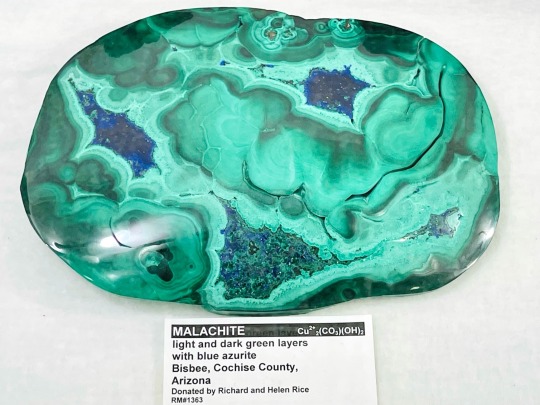
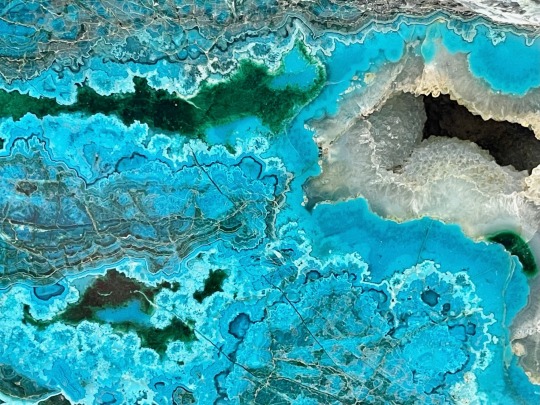
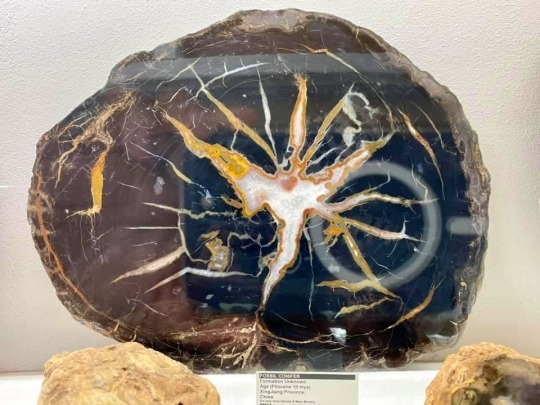

Saw these beautiful specimens at the Rice Northwest Museum of Rocks and Minerals.
4 notes
·
View notes
Text
Thanksgiving and Nutritional Mineralogy

We each have plenty to be thankful and hopeful for this year, but did you know that our traditional American Thanksgiving feast “with all the fixings,” would not be possible without minerals or the people who mine, process, and manufacture the mineral-related materials found in our kitchens?

Kaolinite. Photo Credit: Debra Wilson.
You should thank miners, in part, for the kaolinite clay used to make the fine porcelain china or ceramic plates at your dinner table. When kaolinite is fired in the factory, it partially melts, and crystals of an aluminum-silicate mineral called mullite that hold the ceramic together and give it high heat resistance form on cooling. Also, whether you eat and serve food with silver, steel, or aluminum utensils, extensive work and energy were needed to extract and refine the silver, iron, or aluminum metal necessary for their creation. Silver ore, for example, usually contains many other elements, including lead, zinc, copper, and gold, which can require lengthy chemical or electrochemical processes to separate.

Silver on copper. Photo credit: Debra Wilson.
There might also be some unwanted mineral interactions occurring at the dinner table. If your gluttonous Uncle Ned consumes too much salt (sodium) with his gravy and potatoes (high in oxalate) this year, his body may begin to form kidney stones; which are biologically formed minerals made up of crystals of the phosphate mineral struvite and the calcium oxalate mineral whewellite. These biominerals, which can form when your bladder isn’t fully emptied after a sodium or oxalate-rich meal, can be extremely painful, so be sure to drink plenty of water with your meal. Large crystals take time to grow and drinking more water can reduce the concentration of sodium and oxalate in your body, slowing growth of the kidney stones.
Turkey meat, the mainstay of many Thanksgiving meals, also depends heavily on minerals. Did you know that turkeys actually need to swallow small rocks and pebbles, which are made of minerals, in order to digest their food? “Gastroliths,” or stomach stones, are used by other species of birds, reptiles, amphibians, worms, whales, and even some fish to crush their food and provide more nutrients! Fortunately, we humans have a variety of enzymes and strong stomach acids to break down nutrients in the food we eat.
A surprising amount of nutritional science is applied to raising turkeys; their diet is closely monitored and controlled for proper protein and “mineral” content so that they grow large. You have likely heard the term “mineral” applied to many of our dietary items as well, from mineral water, to a variety of products being fortified with vitamins and minerals, or even the advice that it’s important to maintain a healthy balance of minerals in your diet. The term is somewhat misleading because “minerals” in this sense typically refers to individual atomic elements such as potassium or iron, or to other compounds containing these elements, rather than actual minerals in the strict sense. To a mineralogist like me, minerals are naturally occurring crystalline solids made from a specific combination of elements.
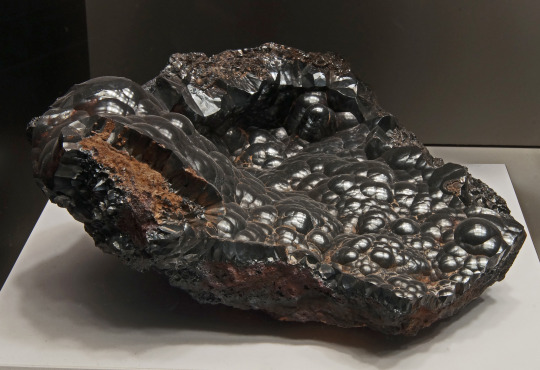
Hematite. Photo credit: Debra Wilson.
Most often, the elements essential for our diet have been pre-digested, extracted or processed by another plant or animal, or have been chemically separated from a mineral source that makes it easier for our bodies to absorb. For example, most rice and cereal in the U.S. is fortified with B-vitamins and iron with a coating of finely ground nutrient powder. While the source of iron used in the fortifying powder varies, it all originates with the iron-oxide minerals hematite and goethite. Plants, bacteria, or stomach acids break down these minerals into iron cations that are easier for our body to process.
Thanksgiving vegetable dishes deserve special attention because plants can be the best sources for certain nutrients. In many cases, fruits and veggies grown on the farm also need help with their diet. Feldspar minerals present in soil hold on strongly to certain elements like K, more commonly known as potassium, making it hard for plants to extract this element. Farmers address this problem by using fertilizers like manure, containing predigested and readily absorbed phosphorous, nitrogen, and potassium, to produce a bountiful harvest
This year, please extend a bit of thankfulness to minerals, but mostly give thanks and recognition to the people that work hard to make your Thanksgiving possible; be it a miner, factory worker, your grocer, butcher, farmer, doctor, or all those working behind the scenes and on the front lines that keep us happy, healthy, and well fed.
Travis Olds is Assistant Curator of Minerals at Carnegie Museum of Natural History. Museum employees are encouraged to blog about their unique experiences working at the museum.
#Carnegie Museum of Natural History#Minerals#Thanksgiving#Potassium#Nitrogren#Phosphorus#Iron#Salt#Kaolinite
28 notes
·
View notes
Photo
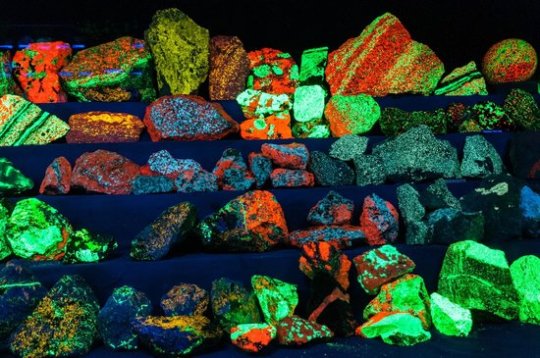


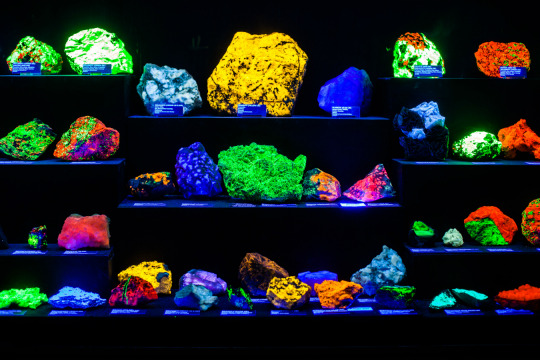
Rice Northwest Museum of Rocks and Minerals\
Gebruik maken van fluorescent eigenschappen kan heel interessant effect geven
2 notes
·
View notes
Photo
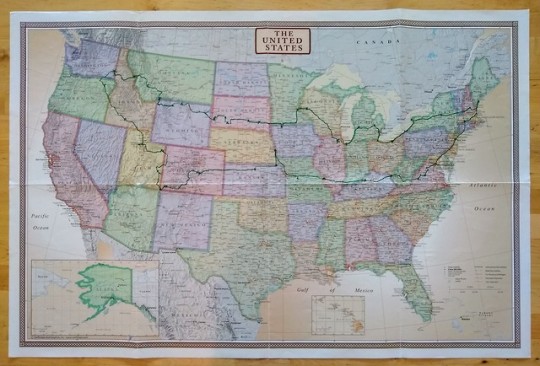
Road Trip: Oh, the Places You’ll Go
On our 10,000-mile road trip, we saw dozens of sights and stopped in more than 30 states. Along the way, we marked our route and several stops on a fold-out paper map, above. Here’s a list of almost everything...
Lolo Pass, Idaho: historical site in the Bitterroot Mountains where Lewis and Clark passed during their explorations.
Berkeley Pit Mine, Berkeley, Montana: one of the largest and most expensive Superfund pollution sites in America.
Yellowstone National Park, Wyoming: Mammoth Hot Springs, Old Faithful, wild bison, and more at America’s first national park.
Medicine Wheel, Big Horn National Forest, Wyoming: a Native American religious site, thousands of years old and still used today.
Crazy Horse Memorial, Crazy Horse, South Dakota: still carving a mountain into the likeness of the famous warrior.
Ken’s Minerals & Trading Post, Custer, South Dakota: a nice rock shop where we probably bought too much.
Mount Rushmore National Memorial, Keystone, South Dakota: four stony-faced presidents carved into a mountain.
Wall Drug Store, Wall, South Dakota: famous for its free ice water and legions of billboards.
Badlands National Park, Rapid City, South Dakota: beautiful and alien landscapes, all at the same time.
Prairie Homestead, Philip, South Dakota: a preserved frontier house made out of sod.
Dignity Statue, Chamberlain, South Dakota: a 50-foot-tall Native American woman.
World’s Only Corn Palace, Mitchell, South Dakota: where people nail corn cobs to the wall as art.
Mall of America, Bloomington, Minnesota: the largest shopping mall in America, and one of the largest in the world.
Cady Cheese, Wilson, Wisconsin: yummy cheese made here (and, in our case, consumed here).
Chicago, Illinois: the Sears/Willis Tower, Lake Michigan, Cloud Gate, Buckingham Fountains, Chicago-style pizza, elevated trains, and more.
Grand Rapids, Michigan: to visit relatives.
Flint, Michigan: site of a serious water crisis that symbolizes all kinds of issues around government, racism, and economics.
Henry Ford Museum, Dearborn, Michigan: highlights all kinds of positive Ford achievements, and included a tour of the nearby Rouge plant that produces F-150 trucks.
Cudell Recreation Center, Cleveland, Ohio: site where Tamir Rice, a black child, was murdered by a white cop a few years ago; a memorable example in the debates around police brutality.
Presque Isle State Park, Erie, Pennsylvania: beautiful beaches overlooking Lake Erie.
Niagara Falls, New York: amazing waterfall experiences at America’s first state park.
Schenectady, New York: to visit relatives.
Hogback Mountain, Vermont: saw the so-called “100 mile view”.
Maine: from Portland’s Commercial and Exchange Streets, to whale watching in Boothbay Harbor, to beaches, to all kinds of seafood… and side trips to Cape Cod, Massachusetts, the White Mountains of New Hampshire, and more. Saw a lot of relatives too.
Naismith Basketball Hall of Fame, Springfield, Massachusetts: honoring the masters of the game at its birthplace.
Yale University, New Haven, Connecticut: we drove through the campus, so the kids can now say they went to Yale.
Jersey City, New Jersey: to visit relatives.
Philadelphia, Pennsylvania: climbing the “Rocky Steps” and enjoying genuine Philly Cheesesteak.
Washington, DC: the White House; monuments to Lincoln and Washington; memorials for World War II and Vietnam; the Holocaust Museum; the Smithsonian Air & Space Museum; the Museum of the Bible; the U.S. Capitol; and more.
Rotunda, University of Virginia, Charlottesville, Virginia: Thomas Jefferson’s historic building at the university he founded.
Claudia Sanders Dinner House, Shelbyville, Kentucky: the original KFC.
Farmington Historic Plantation, Louisville, Kentucky: owned by the Speed family, who had ties to Lincoln, Jefferson, and Washington.
Kentucky Derby Museum, Churchill Downs, Louisville, Kentucky: learning about the legends of the sport, as well as the money.
Gateway Arch, St. Louis, Missouri: as seen from the Malcolm W. Martin Memorial Park, East St. Louis, Illinois.
Pappy’s Smokehouse, St. Louis, Missouri: considered by some to be the best BBQ ribs in the country.
Percival, Iowa: a farm community representative of flooding that has plagued the Midwest this year.
Henry Doorly Zoo and Aquarium, Omaha, Nebraska: the world’s biggest zoo did not disappoint.
World’s Largest Ball of Twine, Cawker City, Kansas: yep.
Pike’s Peak, Cascade, Colorado: one of the most famous mountains in America, and at 14,000+ feet, the highest we’ve ever been outside of an airplane.
Mesa Verde National Park, Mesa Verde, Colorado: amazing cliffside homes built almost a thousand years ago by Native Americans.
Four Corners Monument, Teec Nos Pos, Arizona: where you can stand (or sit, or bounce a ball) in four states at once.
Arches National Park, Moab, Utah: beautiful, alien rock formations.
Moab Isolation Center Ruins, Moab, Utah: site of a Japanese internment concentration camp during World War II.
Dinosaur Quarry Visitor Center, Jensen, Utah: seeing and touching the fossils of giant dinosaurs, still embedded in the ground.
Temple Square, Salt Lake City, Utah: Mormon HQ.
Great Salt Lake State Park, Magna, Utah: the city’s namesake, and some of the saltiest water on earth.
ATK Rocket Garden, Northrop Grumman, Corinne, Utah: examples of various rockets and missiles, including Space Shuttle booster engine parts.
As I emphasized to the kids over and over, we are only seeing a glimpse of everything. We could spend a week or more visiting many of these places.
We also stopped in all of the following states, including our beginning and end:
Washington
Idaho
Montana
Wyoming
South Dakota
Minnesota
Iowa
Wisconsin
Illinois
Indiana
Michigan
Ohio
Pennsylvania
New York
Vermont
New Hampshire
Maine
Massachusetts
Connecticut
New Jersey
Maryland
Delaware
Washington, DC
Virginia
West Virginia
Kentucky
Missouri
Nebraska
Kansas
Colorado
Utah
Oregon
Does DC count as a separate state? Maybe. The kids did their trip activities there. And if you want to count New Mexico and Arizona from our visit to Four Corners, then we’re up to 34 states... though the kids did not do their activities there.
We didn’t go to North Dakota, choosing South Dakota instead for our eastbound trip. And we didn’t realize it until it was too late, but we completely forgot about visiting Rhode Island. Sorry, Rhode Islanders! Ironically, it is the only state that actually has the sound of “road” in its name.
Of course, as I asked in one of the FAQs... Does It Really Count As “Visiting” A State If You Only Drive Through A Little Piece Of It?
--
Read notes from every day of the road trip:
Eastward: 1, 2, 3, 4, 5, 6, 7, 8, 9, 10.
Westward: 1, 2, 3, 4, 5, 6, 7, 8, 9, 10, 11, 12.
And various posts from the FAQ.
#road trip#roadtrip#travel#dads#kids#parenting#parenthood#parents#child#children#childhood#faq#america#states
4 notes
·
View notes
Photo

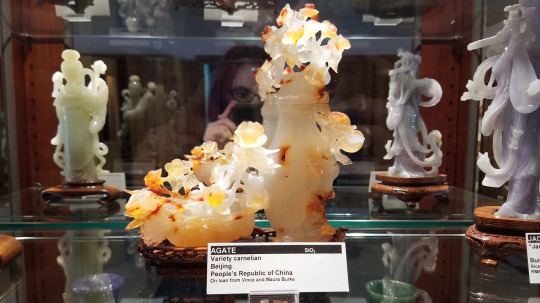
Rice NW Museum of Rocks & Minerals, Oregon, 1-5-20
Instagram | Shop
8 notes
·
View notes
Photo

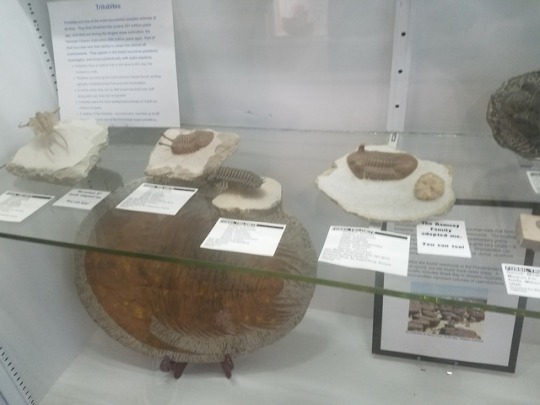

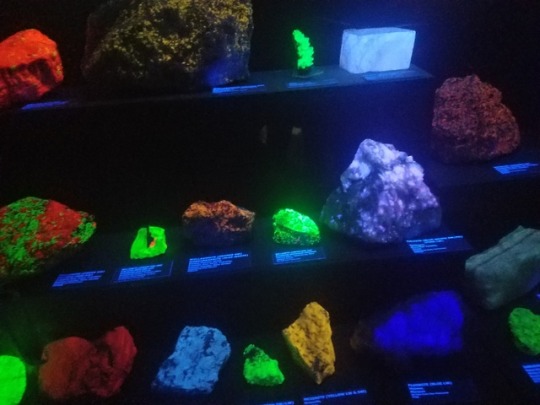


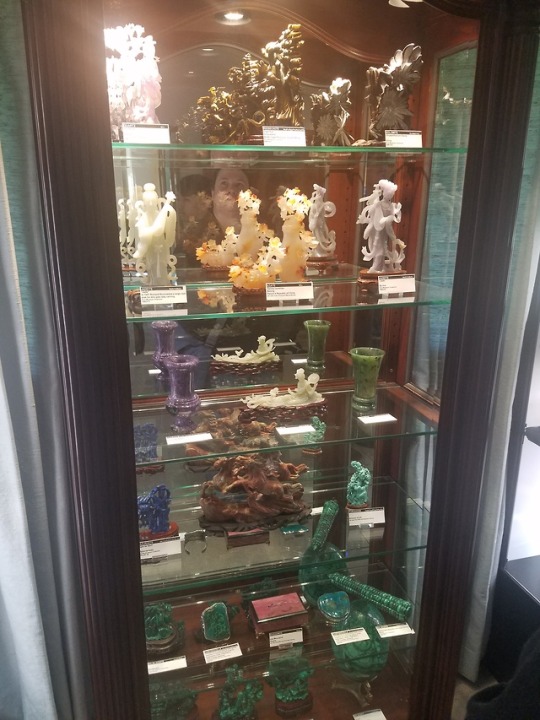


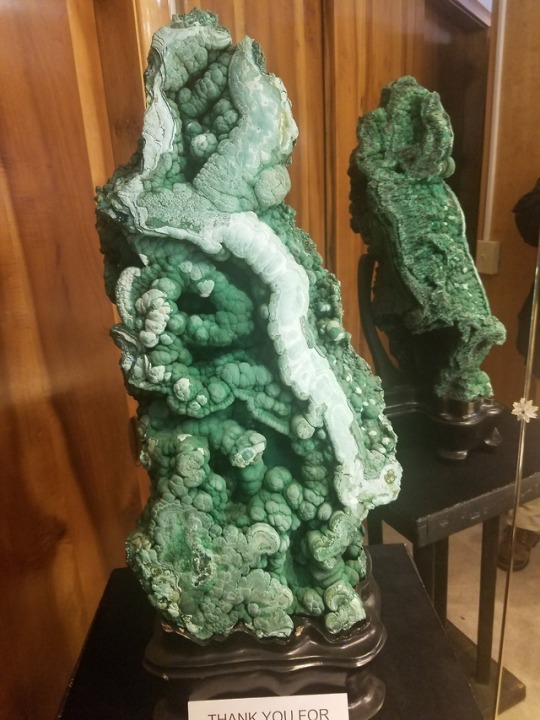
Pictures from a recent school trip to the Rice Museum of Rocks and Minerals, Part 1.
#trilobiter#photography#oregon#science#geology#paleontology#things of beauty#never not awesome#rice museum of rocks and minerals#teaching#education
1 note
·
View note
Photo
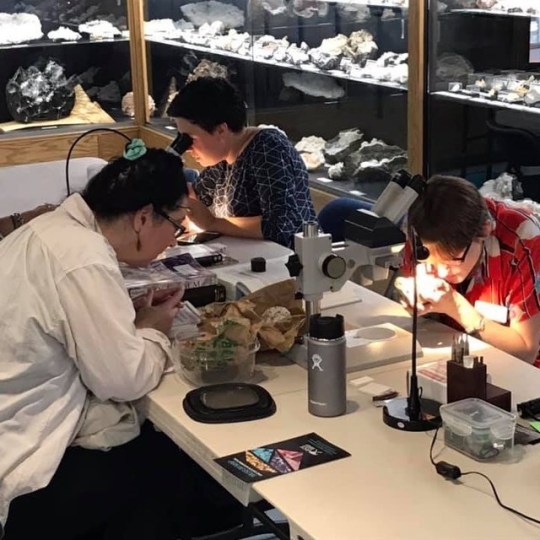
That’s me in the red, identifying pieces people brought in for Mystery Mineral Day at @ricenwmuseum yesterday. I had a blast! (at Rice NW Museum of Rocks and Minerals) https://www.instagram.com/p/B1l4NfRAGnu/?igshid=e3l0d5czqhpk
1 note
·
View note
Photo

Today we adopted our very own Goethite (pseudomorph) from Prince of Wales Island, Alaska. #adopt a rock #mineral #rock #alaska #hillsboro #goethite #pseudomorph #goth rock #literally #onyx (at Rice Northwest Museum of Rocks and Minerals)
3 notes
·
View notes